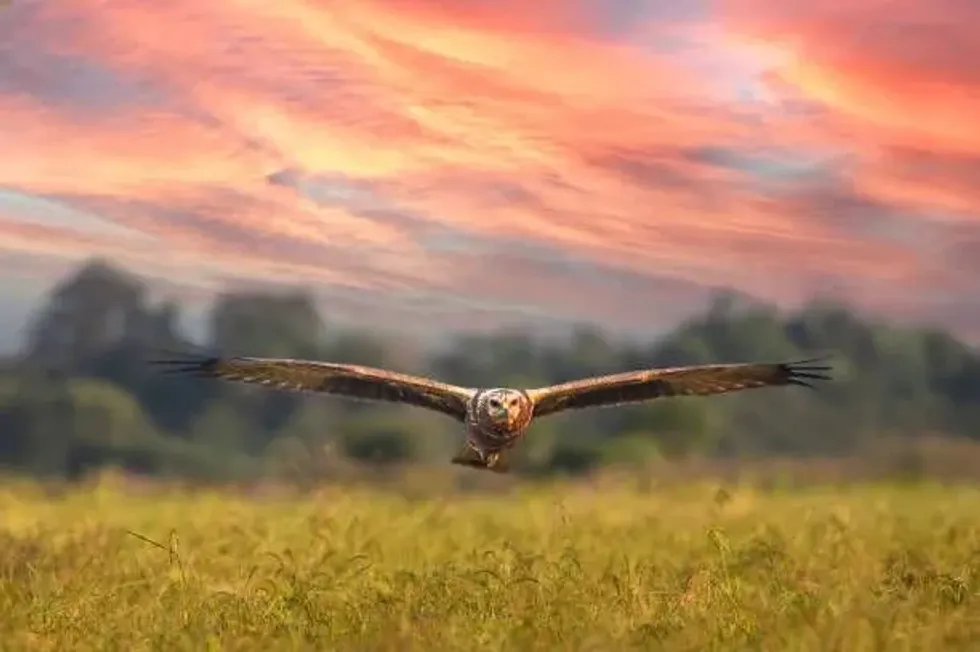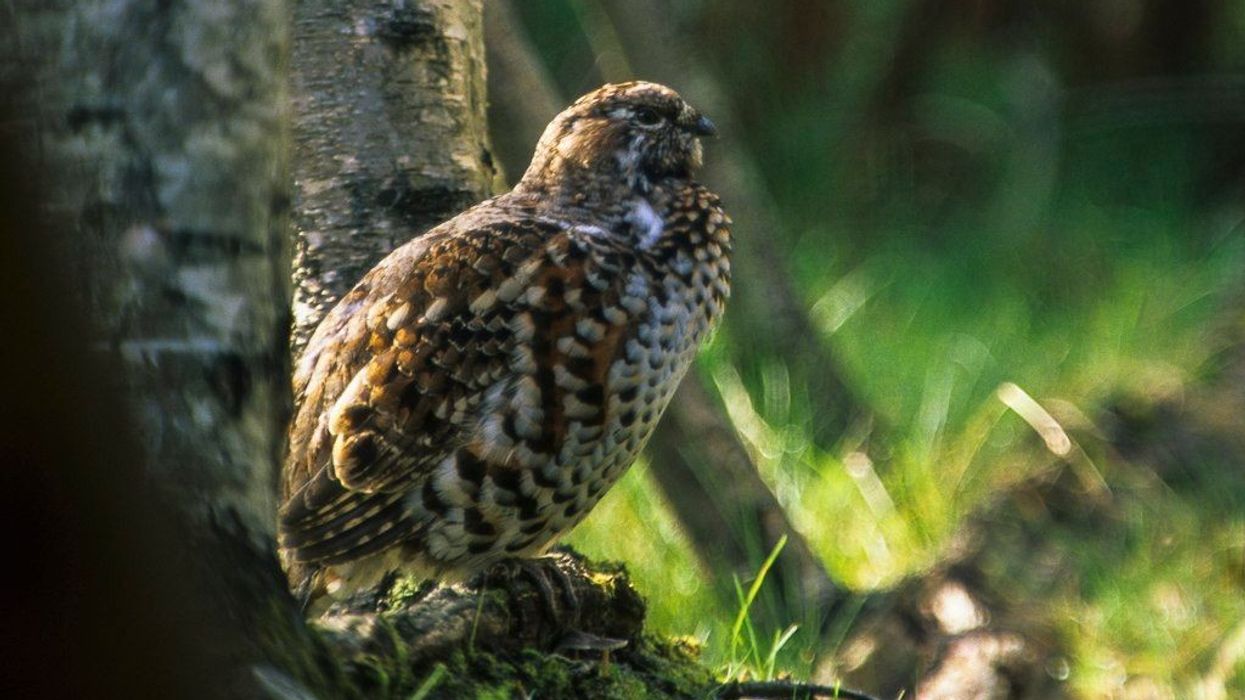With the scientific name Circus aeruginosus, the marsh harrier is also popular as the Eurasian marsh harrier. The population distribution of these birds can be traced across several countries in Europe and Asia.
The declining population of these birds was a major concern.
Their numbers were severely impacted mainly due to the extensive use of organochlorine pesticides (like DDT) that made their eggshells fragile thus resulting in unsuccessful breeding and reproduction.
Additionally, unethical human practices like disturbing bird nests, poisoning, and hunting had rendered these birds vulnerable. To draw an end to these unscrupulous practices, the Nature Conservation Act 2004 (Scotland) and the Wildlife and Countryside Act 1981 (the UK) were put to force.
The act was implemented to ensure that the marsh harrier is protected from the aftermath of illegal actions. Perpetrators accused of damaging the bird's nest or harming the eggs or even a juvenile marsh harrier were to be penalized with a hefty amount of £5000 ($6120.5) and sometimes with a six-month prison term.
These measures helped to curb the malpractices and revive the numbers of the marsh harrier.
These enlightening facts about the marsh harrier have been specifically curated for you. Peek into some more mind-boggling facts about marsh harrier species like the common buzzard and the sparrowhawk.
Marsh Harrier Interesting Facts
What type of animal is a marsh harrier?
A marsh harrier is a species of bird belonging to the family of Accipitridae, genus Circus.
What class of animal does a marsh harrier belong to?
Marsh harriers belong to the class Aves.
How many marsh harriers are there in the world?
The UK was left with only one female marsh harrier in 1971 but conservation efforts revived the numbers to about 400 pairs. According to the International Union for Conservation of Nature (IUCN) data, there are about 500,000-1,000,000 adult western marsh harriers throughout the world.
Where does a marsh harrier live?
Marsh harriers can be found in several places across the world. For instance, the western marsh harriers can be found in Asia as well as Europe, while the eastern marsh harriers are common in places like northeast China, Siberia, Japan, Mongolia, and Manchuria.
The former migrates to Africa whereas the latter moves to the Philippines, northeast Asia, and Borneo. The African marsh harriers are scattered in the eastern and southern parts of Africa. These birds are also prevalent in South-East and North-West England, East Scotland, and East Anglia.
What is a marsh harrier's habitat?
The habitat distribution of this rare bird is pretty wide-ranging. A marsh harrier's habitat includes wetlands, grassland, farmland, coastal and freshwater regions. These birds are also found nesting in reedbeds.
Who do marsh harriers live with?
These birds are known to live in pairs during the breeding season. During the breeding period, a male bird sticks with two or three females, engaging in lively courtships. However, these birds dwell alone and are not commonly seen in large flocks.
How long does a marsh harrier live?
Marsh harriers live for about six years in the wild.
How do they reproduce?
Marsh harriers have a unique way of breeding. The graceful acrobatics that a male and female marsh harrier engage in during the breeding process might be an unusual sight for an ordinary individual. These birds tumble and wheel mid-air and lock talons to consummate.
The males engage in protecting the nest while the female bird builds the nest in suitable areas on the ground. Nesting occurs in reedbeds with materials like reeds, twigs, and grass.
The female marsh harrier serves an incubation period of around 31 to 38 days after laying three to eight eggs. The males gather food for the family while females feed the hatchlings. Fledging occurs at around 35 to 40 days.
What is their conservation status?
The conservation of the marsh harriers depends on their species. As per the IUCN Red List, the Reunion and Madagascar marsh harriers are endangered with declining population trends while the Western, Eastern, and African marsh harriers fall under the category of Least Concern.
Marsh Harrier Fun Facts
What do marsh harriers look like?

The male comes primarily in a brown shade with tri-colored wings and a long grey tail while the female possesses a chocolate-brown plumage with golden-yellow or cream shades around the throat and crown. The juveniles are also brown-colored at birth.
The bird has a slender body, broad wings, long legs, a hooked beak, and a long, pointed gray tail. A marsh harrier's wingspan is about 47 in (1.2 m).
Each broad wing helps the birds in making a v-shape by holding them up in the air during flight. This shallow v-shape of the wing offers a distinct appearance to the marsh harrier.
How cute are they?
These predatory birds appear to be more ferocious than cute.
How do they communicate?
These birds interact with each other through a variety of sounds. A marsh harrier sound can be identified from its 'quik', 'ek', and 'kek' sounds.
Nasal sounds are common among the males while the females utter a piercing shrill 'eeyah'. Interestingly, a juvenile marsh harrier also lets out calls for food when it finds the parents hovering above its head.
How big is a marsh harrier?
Marsh harriers are the largest predatory birds among all the harrier bird species. The average length of a marsh harrier ranges from about 19-22 in (48-55 cm). These birds are smaller than the Andean condors with an average length of 39-51 in (100-130 cm). However, they are larger than green parakeets.
How fast can a marsh harrier fly?
With strong and large wings these birds can achieve both high and low flight speeds. While foraging for food, especially hunting down birds, it can attain a speed of 25 mph depending upon the location of the hunt.
How much does a marsh harrier weigh?
On average a marsh harrier's weight ranges approximately from 1.2-1.5 lb (540-670 g).
What are their male and female names of the species?
Generally, the male and female of the species are regarded as a cock and hen respectively.
What would you call a baby marsh harrier?
Babies of marsh harriers are called by the common name used for all birds. They are referred to as hatchlings, nestlings, or chicks.
What do they eat?
These birds are prolific hunters, very methodical in their approach. With their sharp listening skills and scanning abilities, they can trace prey in the rice fields on ground surfaces and head in for a direct attack.
For this purpose, they use their sharp talons to strangulate the bird in an inescapable grip. They enjoy a carnivorous diet comprising small mammals like rabbits, ducklings, chicks, and others.
Are they dangerous?
Marsh harriers are birds with inherent predatory instincts implying that they can prove to be dangerous. However, there is no scientific evidence as to how dangerous these birds are.
Would they make a good pet?
The marsh harriers are birds of the wild. Keeping these birds encaged as pets is considered illegal as these birds are protected under wildlife preservation laws. Therefore, it is unknown whether they would make good pets.
Did you know...
Marsh harriers are migratory birds. They move out during the winter, usually in the months of September or October. However, they return home by April before the commencement of the breeding season.
The otherwise aggressive-looking birds engage in a lot of acrobatic motions mid-air while appeasing their partners before breeding. Normally the male tries to please his female counterparts.
The marsh harriers were extensively hunted down in England up to the point of extinction. The Wildlife and Countryside Act charted out in 1981 was formulated to preserve the species and revive their population from the brink of extinction.
Types of marsh harrier
Marsh harriers have been distinctly classified into five species namely the Reunion marsh harrier, Madagascar marsh harrier, Eastern marsh harrier, Western marsh harrier, and African marsh harrier. The first two species are highly endangered species due to their dwindling population while the rest are comparatively common in many places.
What does a marsh harrier symbolize?
Marsh harrier symbolism depends upon perspective. Due to its predatory nature, it stands as a power symbol while many consider the bird a symbol of ruthlessness or undaunted fearlessness and courage.
Here at Kidadl, we have carefully created lots of interesting family-friendly animal facts for everyone to discover! Learn more about some other birds including shoebill facts and harrier hawk facts.
You can even occupy yourself at home by coloring in one of our free printable marsh harrier coloring pages.










